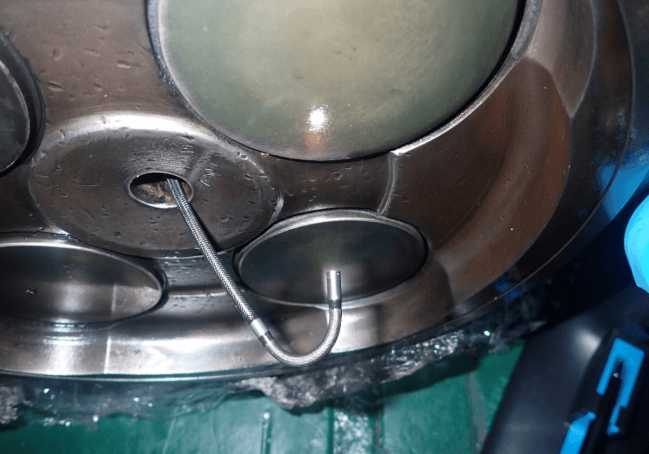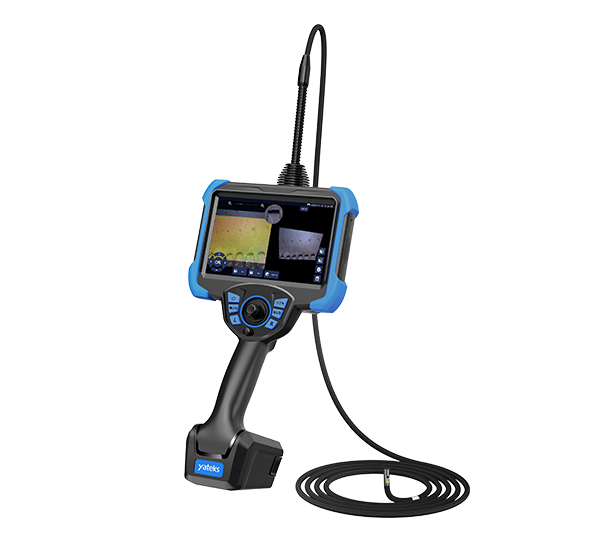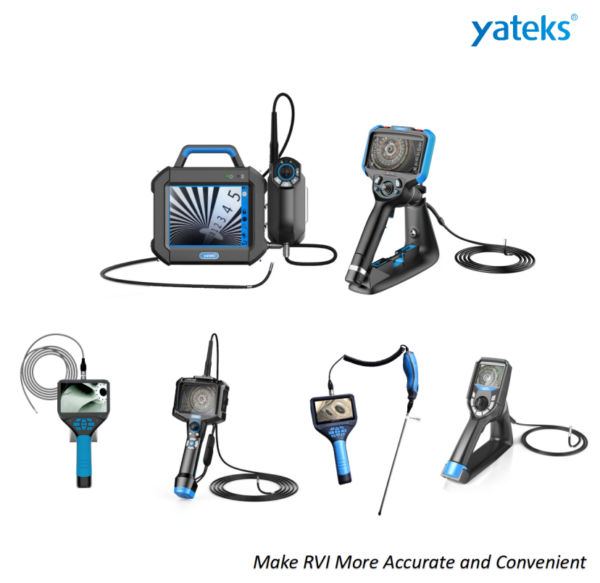The selection of industrial borescopes is closely related to the specific working conditions, the realisation of the purpose and the price budget. And these three factors are progressive relationship, firstly, we should clarify the use of the situation, and then based on whether the purpose can be achieved to screen industrial borescopes. Because there are many types of industrial borescopes, the obvious thin need to be clear in what kind of environment, such as to reach in the hole diameter how wide? How big is the internal space? How is the light condition? And so on, only after clarifying many of the above factors can we further choose industrial borescopes!
1. Cable diameter and length
Borescope cables are available in a variety of lengths and diameters, which can complicate choosing an appropriately sized cable. This choice is restricted by component openings, pipes and vents in the machinery being inspected. Purchasing an inspection camera that can accommodate several cable sizes may be advantageous as smart engineers can avoid the need for multiple borescopes of varying widths and potential refitting costs.
2. Rigid or flexible borescopes
Rigid borescopes typically have smaller diameters which allow for the inspection of very small components and spaces. Using a simple design, economical materials and small inexpensive lenses, rigid borescopes are easy to use and offer high-resolution images of small parts and straight pipes. However, due to their lack of motion and with viewing limited to a straight line, they are not ideal for applications requiring the inspection of irregular internal cavities.
Flexible borescopes enable the inspection camera to be moved in different directions and at different angles. Perfect for curved pipes, ducts and vents, the high mobility offered with flexible borescopes enables them to overcome space limitations and steep angles. Capable of covering both small and large areas, they can perform inspections in a variety of environments with depth and accuracy.
3.Direction of view
The direction of view (DOV) describes a device’s view from the longitudinal axis through the scope’s tube. Specified in degrees, it can be fixed or variable, and potentially adapted by using an interchangeable tip adapter.
- 0° viewing angle – straight forward
- 45° viewing angle – oblique
- 90° viewing angle – side
- 110° viewing angle – retrograde
Borescopes with 90° viewing angles are ideal for inspecting piping and narrow spaces in great detail. However, other applications may require borescopes with broader viewing angles for more comprehensive che
4. Field of view
The field of view (FOV) is the cone of vision that extends from the objective tip. As the field of view widens, more surface area can be seen. However, with a wider field of view, detail typically reduces, becoming less capable of magnification. As the inspected object’s distance from the scope increases, the FOV angle should decrease, improving magnification and image quality.
Whilst certain inspections may require a wider or narrower field of view, the standard for most MRO requirements is approximately 55°.

5.Depth of field
The depth of field (DOF) describes the distance from the tip of the tube to the furthest object that appears clearly focused (maximum). The DOF is expressed by a minimum and maximum distance, where the image will appear blurry if the tip is closer than the minimum value. The machinery being tested will dictate the appropriate DOF so that a suitable camera can be chosen depending on the depth of components being checked.
6.Environmental factors
Used in typically inaccessible areas, inspection cameras must be chosen in relation to their intended testing environment. This includes factors like ambient lighting and vibration. For plumbing, cameras will need to be waterproof whilst those used in engineering applications may need to withstand exposure to chemicals.
7.Memory and storage for photos and videos
Sometimes it may be necessary to record images and videos from a visual inspection. IIf this is the case, purchasing a borescope with a removable SD memory card to easily download these images will be useful. More advanced borescopes may also be able to run additional analytical software. This capability comes with an increase in cost, so it is worth considering whether it is essential or not.
8. Illumination
Inspection cameras require a light source to illuminate the piping or cavity being examined. The choice of light source is contingent on the intended application. Inexpensive borescopes often use bulbs, which can cause heating and contamination problems – fiber-optic illumination or LED lighting might be preferable for sensitive applications.
9.Availability of accessories
As camera inspection devices can be quite costly, enhancing your device so that it can be used for a greater number of applications may be useful. This can be achieved by using compatible accessories such as:
- Longer camera pipes
- Extension poles
- Magnets
- Hooks
- Mirrors
Using these attachments can maximise efficiency by lengthening the device, retrieving metal items and seeing around corners. Whilst they are available to purchase separately, buying a complete unit with relevant attachments included is advisable as products can vary in quality and design. Inefficient attachments will hinder performance where a magnet is weak, a hook is too small or the accessories are ill-fitted.
10.Ease of use
Inspection cameras should be well designed, comfortable to use and ergonomic in design so that they can be operated with one hand whilst the other is free to guide and control the pipe effectively. Controls should also be within easy reach of the fingers and thumb. In this way you will not have to let go of the camera to take a photo, which could make it move and affect the image taken.
Capable of diverse application and widespread use, the variety of inspection cameras available on the market is extensive. With increased functionality comes an increase in price, and so weighing up examination requirements against cost implications is essential. Borescopes are invaluable for maintenance, repair and operations in industry, enabling checks and examinations without needing to disassemble machinery and incur costly downtime.





